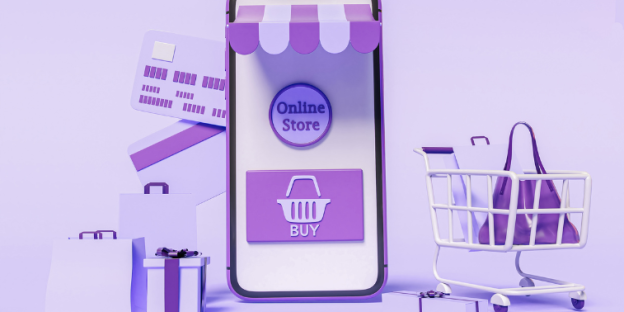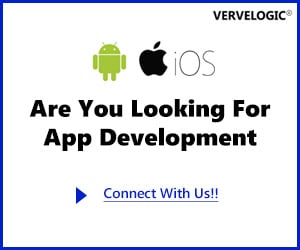How to Write an Effective Mobile App Product Requirements Document

Having a detailed vision of your mobile app can help become successful in the long run. An app idea that is documented properly can present itself better to the fundraisers. It also proves beneficial in explaining your idea to the mobile app development company you choose.
The product requirement documentation (PRD) empowers you with clear documentation of app features, functionalities, and specifications. Let’s learn more about the Product Requirement Document and how to develop it.
Content Tags
1. What Is a Product Requirement Document?
2. Why Is Mobile App Product Requirement Document Important?
3. What Should Be Included in a Product Requirement Document?
4. How to Write a Product Requirement Document?
b. Step 2: Define the purpose of the product
c. Step 3: Define User Profiles
e. Step 5: Define the criteria of product release
f. Step 6: Define Product Principles
g. Step 7: Pen Down Everything
h. Step 8: Check the effectiveness of PRD
5. Write an Effective Mobile App Product Requirements Document: Conclusion
What Is a Product Requirement Document?
Source: Dribbble
The collection of purpose, product specifications, features, behavior and functionalities for a mobile app is known as a Product Requirement Document (PRD). This document holds all the aspects of project development from the beginning to the deployment.
You can have a description of the problem, its solution, success indicators, timeline to complete the project and more clearly written in the document. Setting clear goals for the team and answering every question related to the mobile app is the ultimate aim of the product requirement document.
PRD is also known as “Requirements”. For a mobile app development company, the document answers all the questions to the project manager. The functionalities of the product, what to expect from it, its limitations, and related questions are taken into consideration. This document answers the ‘What’ and ‘How’ of your mobile app.
You can also plan to create a Minimum Viable Product. How does it work? Our blog will help you learn all about MVP, How to Plan a Minimum Viable Product: Your Ultimate Guide.
Why Is Mobile App Product Requirement Document Important?
Source: gifer.com
Let’s say you work at a sandwich store. A customer comes and orders a sandwich without any specifications. What would you do? What all fillings would you add? Would there be cheese? Will it be grilled or not? There are many questions. To make a perfect sandwich, you will have to ask your customer in the end. Right?
If you had all the specifications of your customer well in the beginning, wouldn’t the process become better?
Similarly, here, our mobile app is our sandwich and the sandwich maker is the project manager of an app development company. Without understanding more about your final product starting with the development process is difficult. Even if you were able to create an iOS and Android app, most probably the idea would fail.
For the mobile app development process, the Product Requirement Document covers everything you need to know, constraints, dependencies, and even assumptions. This document can be referred to at any stage of mobile app development.
You can represent it to the stakeholders and investors for pitching your iPhone and Android app. This blueprint can guide the team and help them to be in line.
Every detail of mobile app development is mentioned in the PRD making sure that there are no blind spots.
What Should Be Included in a Product Requirement Document?
Explaining the scope, function and purpose of a mobile app is the prime aim of mobile app PRD. Since many people refer to it, including app developers, designers, testers and marketers, it is recommended to be written clearly.
Planning the user journey and including system, environmental and usability requirements make a perfect PRD. Here are some of the sections that need to be included in the document:
-> Key Objective
Identify the problems of your potential customers and define their solutions. You can write about why and how the problem will be solved. Explain the goals you wish to achieve with your mobile app. You can talk to your customers to understand their needs better to accomplish this task.
-> Product Features
Integrating lots of features can attract your audience well. Knowing the key objectives, your features must be in line with your mobile app. Explain the features that your mobile app will have in great detail. This will also establish a basic design of your iOS and Android mobile app. To make it more clear you can define the interaction method of the users on your app.
Do you need an embedded camera in your mobile application? And where will the buttons be placed? What about Smart search and infinite scrolling? What features do you need to make your mobile app a successful one? Learning more about Mobile App Analytics can also help you in building an effective PRD.
The performance and speed, feedback and support, minimum functionality, reliability, and usability are all specified in a Product Requirement Document.
-> UX Flow and Design
How do you imagine your product to look like? You don’t have to make it perfect for this document as wireframing and mockups will help you arrange. However, a Product requirement document requires the feel of the mobile app. The user workflow can be described and you can better meet your product release objectives with this.
-> Key Dates
This section specifies the time limit of the project and hence, is very crucial. You specify the time limit for different components’ releases, milestones and iterations. Here are some of the important dates that you must specify:
1. Date of app initiation,
2. Product milestones date,
3. Dates for feature development,
4. Dependencies dates and
5. Mobile app deployment date.
-> System and Environment requirements
Operating system requirements, Browser support must be specified in the PRD. The processing power and memory capacity can also be specified in the requirement.
-> Assumptions, Constraints and Dependencies
PRD contains everything that you can think of. Including all the requirements of your users, be it functional or non-functional. You can also mention what you specify from the users and the limitations that can be encountered during the mobile app development process. Also, identify the costs associated with the mobile app. Do you know how much it costs to develop a mobile app? We have got you covered with our comprehensive blog, How Much Does it Cost to Make an App in 2021?
How to Write a Product Requirement Document?
A Product Requirement Document can be created by the collaborative efforts of a mobile app development company and the client. But make sure you meet the needs of your users. Here is a step-by-step guide to writing a product requirement document.
Step 1: Research
Source: Dribbble
This part is very important for your mobile app development process. Research in terms of Product Requirement Document means knowing more about your customers and competitors. You can take help from the mobile app development company and specify the technologies, strengths of the team and future plan of the competitor.
The more you research, the better it would be for your mobile app success. You can have a clearer vision of your approach and for your iOS and Android app.
Step 2: Define the purpose of the product
Aligning the mobile app development is the prime aim of the product requirement document. The purpose of your project must be specified in the PRD. There are three parts of defining the purpose of your mobile app:
1. What is the reason behind the development of the mobile app and what basic problem will it solve?
2. Who all will benefit from the development of the mobile app?
3. How is your mobile app different from existing ones?
To be successful you will have to meet the requirements of the users and define a value proposition.
Step 3: Define User Profiles
Understanding more about the potential users is a must. While you write the Mobile App Product Requirements Document, make sure you define your users clearly and in detail. The features you wish to incorporate in your mobile app will greatly depend on the persona of your users.
Step 4: Set The Goals
Your mobile app should be SMART (Specific, Measurable, Attainable, Relevant and Timely). You need to solve the challenges customers are facing with existing solutions. Think from your potential user’s point of view. Identifying the goal of each user who will be using your mobile app. Every user is unique and it will help you acquire greater knowledge about your iOS and Android app.
Step 5: Define the criteria of product release
If you wish to deploy a mobile app that is successful it is important to discuss the benchmarks. Here are some of the criteria to consider for your iOS and Android mobile app:
Functionality
Define the minimum functionality in your product requirements document that you wish to have in your mobile app. There are the most important functionalities that are mandatory. Without these your mobile app is nothing.
Usability
Setting usability criteria will help you deploy a usable product. After all, making a mobile app that is accessible to your users is the ultimate goal.
Reliability
The mobile app must be reliable as it is here to solve their problems. A reliable product is appreciated by the users.
Performance
Both technical and non-technical problems should be addressed by the mobile app. Performance criteria ensure that your iPhone and Android app is capable of addressing challenging problems.
Supportability:
The release of your mobile app must be supported.
Step 6: Define Product Principles
Every important aspect is covered in the PRD. The Product Requirements Document aligns different teams working on your project to achieve one goal. The product principle will reduce the conflicts of ideas between different teams. You will also be able to make better decisions with the help of product requirements guide in the app development process.
Step 7: Pen Down Everything
The PRD you have must be accessible and shareable with all your team members. Tools like Google Docs, whiteboards and PowerPoint decks will help you create and share your document with all the people. The Product Requirements Document will keep on evolving as your mobile app gets built. Use the tool that helps you update your PRD easily. You must also write about the app development tools. Our blog will help you find some of the Best Mobile App Development Tools that you can specify in your document.
Step 8: Check the effectiveness of PRD
Source: Giphy
All the above steps will help you create a draft of your PRD. Checking its effectiveness is the main task after that. Check if your document is easily understandable by members or not. You can take help from your mobile app development company/Mobile app developers to review your document.
You can also ask your investors and stakeholders to review your Mobile App Product Requirements Document. If it is convincing to them and clearly specifies the purpose and scope of your mobile app, the PRD is good to go.
Write an Effective Mobile App Product Requirements Document: Conclusion
Product Requirements Document is one of the most important documents to create for your iOS and Android mobile app. It keeps a record of every decision of yours and your expectations. You can keep adding topics and suggestions to it as you keep moving ahead with your mobile app development process.
Regularly viewing your Mobile App Product Requirements Document will help you keep it up-to-date and effective. With these steps, you will be able to create a crisp, productive, clear, and concise PRD. If this helped you, let us know in the comments section below. You can also read our blog, ‘How to Increase App Engagement and User Retention?’ to create a better strategy.















This blog has all the details required. It helped me understand the basics. Thank you so much for sharing such valuable information.
The article has the best guidance to prepare Mobile App Document.
Everything about the Mobile App Product Requirement document at one place. Thanks for the great blog.